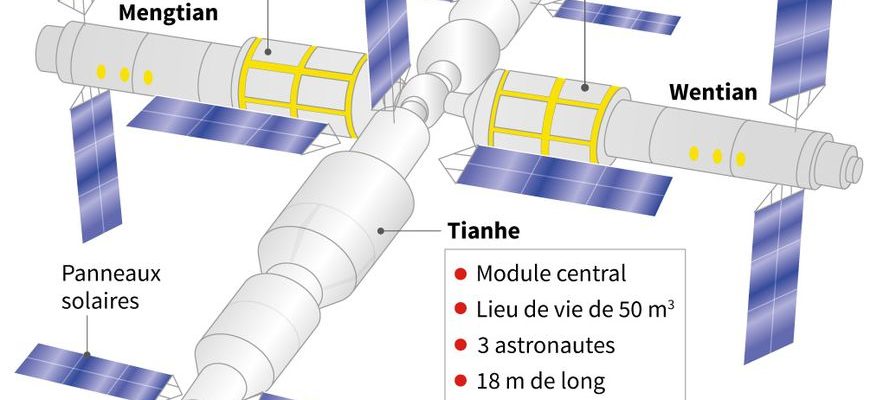This is a first in its history. China is sending a civilian astronaut into space on Tuesday, May 30, for a manned mission to the Tiangong space station with the goal of sending a crew to the Moon by 2030. So far, all Chinese astronauts who flew into space were part of the People’s Liberation Army.
During the expedition, Gui Haichao, a professor at Beihang University, will lead scientific experiments, said Lin Xiqiang, spokesman for China’s Human Space Flight Agency, on Monday. The astronaut will conduct “large-scale in-orbit experiments” to study “new quantum phenomena, high-precision time-frequency space systems, verification of general relativity, and the origin of life,” the astronaut said. spokesperson.
A first for scientists
I’ve always dreamed of this,” rejoiced Gui Haichao Monday at a press conference. This scientist comes from an “ordinary family” in Yunnan province (west), described Beihang University. He ” felt an attraction for aerospace” in 2003, following on the radio of his campus the flight of the first Chinese in space, reported his university on social networks.
His participation in the flight “is particularly significant”, estimated the independent expert Chen Lan to AFP, given that the previous missions had only embarked astronauts trained as pilots and responsible for more technical tasks, and not specialized scientists.
“It means that from this mission, China opens the door to space for ordinary citizens,” he said.
It is due to take off from the Jiuquan launch base in northwest China on Tuesday at 9:31 a.m. local time (0131 GMT), the space agency said. The civilian astronaut will fly in orbit alongside Shenzhou-16 mission commander Jing Haipeng – who is on his fourth flight, according to state media – and engineer Zhu Yangzhu. They will stay for about five months at the station.
A first crew on the Moon by 2030
Projects related to the Chinese “space dream” are multiplying under the presidency of Xi Jinping. The Asian giant has been investing billions of euros in its military-led space program for several decades, which has enabled it to make up most of its delay against the Americans and the Russians.
China sent its first astronaut into space in 2003, and its Tiangong (“Heavenly Palace”) space station has been fully operational since late 2022. In 2019, a Chinese craft landed on the far side of the Moon. Then, in 2021, China brought a small robot to the surface of Mars.
It plans to send a first crew to the Moon by 2030 where Beijing wants to establish a base, which spokesman Lin Xiqiang reaffirmed on Monday. “The main objective is to achieve the first landing (of a crew) on the Moon by 2030 and to carry out lunar scientific exploration” as well as experiments in technology, he described. .
Chinese space station Tiangong
© / afp.com/Laurence CHU
The first cold atomic clock system
The last module of the Tiangong station successfully docked with the main structure of the facility in 2022. The orbital base is equipped with state-of-the-art scientific equipment, including the “first atomic cold clock system” for space , according to the new China news agency.
Tiangong is expected to fly in low Earth orbit at an altitude of 400 to 450 kilometers for at least 10 years to allow China to maintain a long-term human presence in space. Crews will take turns to ensure a continuous presence within the orbital laboratory, will carry out scientific experiments and test new technologies.
Beijing does not plan to use Tiangong for cooperation with other countries on the same scale as the International Space Station, but says it is open to possible collaborations whose scope is unknown. China “looks forward to and welcomes the participation of foreign astronauts in manned missions to the country’s space station,” Lin Xiqiang said. Since 2011, China has been barred from the International Space Station, when Washington banned NASA from cooperating with Beijing.
